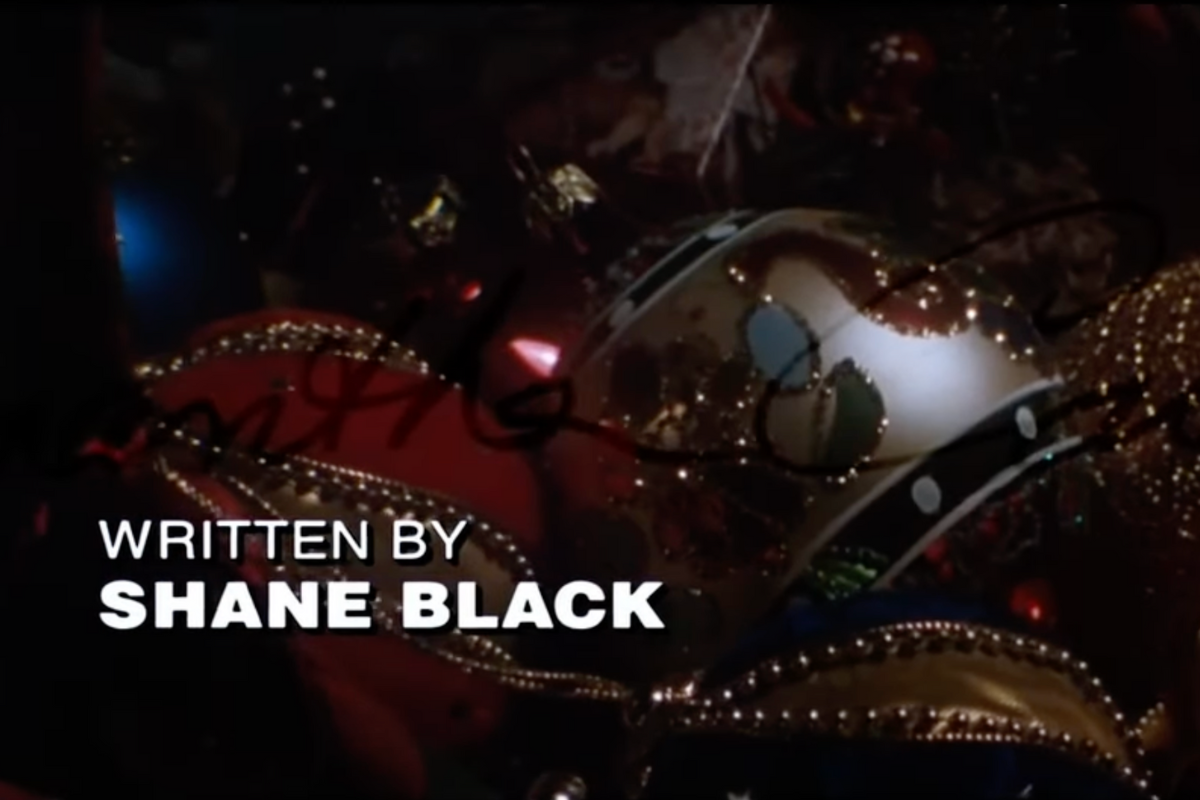Breaking & Entering: Reading for Other Writers – The Art of Feedback
Every writer knows the sting of bad feedback – the kind that leaves you doubting your story and yourself. But what if feedback could inspire, not deflate?
We’ve all felt the sting of harsh feedback. But what if giving notes could feel less like criticism and more like collaboration? Here’s how to strike that balance.
I once breezed into a blind date two minutes late and somehow launched into pitching my passion project. I’ve no idea why except that I was about to have a big meeting on this, so it was on my mind. When I finished, the guy exclaimed, “You’re a great storyteller!” Best compliment you could possibly give me – a self-professed storyaholic.
Of course, I couldn’t help but be impressed by his good taste and considerable acumen.
It’s basic human nature that when someone compliments your abilities, you’re apt to believe that they’re smart. Since they clearly know what they’re talking about, you’re more open to hearing what they have to say, including things that are less than complimentary. In fact, you’re likely to listen more closely to what follows.
Always begin with a sincere compliment, even if you have to dig deep.
There was an oft-told anecdote at my alma mater, Northwestern University, about a professor in the Oral Interpretation department. Lila Heston, sister of Charlton, had one steadfast rule in her class. After a performance, the first comment had to be complimentary. This maxim was tested one scorching hot Chicago summer after a performance in a basement black box theatre [read: “oven”] that was utterly devoid of merit. Dead silence. No one could speak as there was nothing good to be said.
With admirable flair – developed, no doubt, over a lifetime of having to be Charlton’s sister – Lila inhaled deeply on her cigarette, paused a moment, perhaps to contemplate, before letting out a long, dramatic exhale. Breaking the heavy silence, she remarked without an iota of irony, “How admirable… your performance… in this heat.” Thereby saving the day and ensuring her reputation as a legend.
If writers’ groups – whether online or in person – are to succeed as safe and productive communities, then, as novelist and book reviewer J. Robert Lennon explains in his Salon article “How to Write a Bad Review,” “It is important both to support each other and criticize each other, and to find ways to do both, respectfully and constructively.”
My motto? Whether you are being complimentary or critical, be kind, be specific, be constructive, and butt out – because it’s not about you!
Be Kind
How do you balance honesty with encouragement?
Effective feedback should highlight strengths while addressing weaknesses with clarity and respect. Focus on what works first before offering constructive notes on what needs improvement.
- What did you love?
- What moved you?
- What impressed you?
- Did the message speak to you?
This ensures that things get off on the right foot.
Then frame areas that need improvement as opportunities, not failures: to dig deeper into the character arc, paint more vivid pictures with fewer words, explore ways to make the theme more resonant. The goal is to help the writer grow and elevate their story, not to discourage or overwhelm them.
When I’m working with a consulting client who is still learning how to write a screenplay, I might notice one instance where they nail a specific technique and a half-dozen where they miss the mark. My approach is to point out and praise the good example – it proves they have the ability to succinctly introduce a new character, craft evocative subtext, or put a button on a scene. They’ve convinced me they know “how to speak this language,” now they just have to do it consistently. When I get to an example where they’ve fallen short, I remind them that they’ve proven they can do it.
Showing the writer where they’re getting it right is a great way to build both their writing strengths and their confidence.
Be Specific
In this medium, where we’re focused on the efficacy and impact of each written word, it quickly becomes apparent that “good” and “bad” are hopelessly vague terms that convey relatively little actual information.
When I taught coverage, my goal was to build students’ skills for a future in the business. I encouraged them to master industry vocabulary to be specific in their comments.
Some examples:
Premise Jargon – original; fresh; clichéd; clever; overdone; familiar; relevant; contemporary; fascinating; funny; engaging; unique; unfocused; a new spin on a familiar story
Character Jargon – intriguing; appealing; likeable; unappealing; flat; complex; one-dimensional
Dialogue Jargon – brisk; evocative; dynamic; forced; stiff; lean; hollow; preachy; stilted; talky; age-appropriate; distinctive voices
I also encouraged students to think separately about The Idea and The Execution. I explained that you can like one and not the other. It’s all too easy to bash execution, but a great idea is a thing of beauty. Execution can always be improved.
Poorly executed scripts with great ideas get sold, as they can always be rewritten. On the other hand, a project might not be right for us, but the writer may have a great strength that we’re looking for in an open writing assignment, to develop an idea, or be someone whose next script we would be eager to read.
Thinking this way can elevate your feedback. First look at the big picture of the premise – the concept and how it plays out, which is the plot. This is the dramatic structure, the conflict, escalation, twists and stakes. Focus on these before drilling down to execution.
That includes characters and relationships, arcs, description, dialogue, and action. A great way to wrap up is to discuss the theme. It brings the conversation back to the big picture.
- What was your takeaway from the story?
- Was the message clear and resonant?
- Are they illustrated in the protagonist’s arc and reflected in the primary supporting characters?
- Did the theme move you and linger in your mind?
Being specific and expressive in your feedback will make it more effective and actionable. Because when it comes to talking about the art of writing, “good” and “bad” simply aren’t good enough.
Be Constructive
A significant part of what you have to offer another writer is a fresh pair of eyes. The longer you work on a project, the more challenging it is to have perspective.
Things that begin as a deft touch – a subtle detail that reveals character, a skillful misdirection, or a hint of foreshadowing – starts looking like a skyscraper to the creator after taking pass after pass. It’s easy for the writer to feel they are bashing us over the head and tone it down, often to the point of us missing the point.
Before you leap into the fray, if a story element wasn’t clear to you, no need to be negative. Suggesting that it be clarified will be far more illuminating.
Focus first on what is there – not what it could be. Then you can point out areas that could be strengthened.
Productive suggestions are aimed at helping the writer tell the best possible version of their story. When I do a Script Consultation, have a Mentoring Session, work with a book author, or give notes on a producing project, I sometimes spitball ideas to try to spark the writer to think of something far better, and a true match for their story and voice.
I’m not telling them what to write, I’m trying to open them up to new possibilities and get their creative juices flowing. I like the analogy, “What would you like on your hot dog?” I might suggest chili, mustard, relish, all in hopes of sparking an idea that tastes good to the writer. “Oh my gosh, jalapeños, why didn’t I think of jalapeños? That’s brilliant!”
The concept behind this approach is called “Sudden Illumination.” My goal is to facilitate that in my consultations. Read more about how to encourage this in your own writing process in “Spark Creativity – Pressing Pause and Sudden Illumination.”
Butt Out
Don’t fall into the feedback pitfall of doing your version of their story. The goal is to bring out the best in the original story, not remake it in your own image, with choices that feel right from your voice and perspective.
This kind of “transference” can easily happen with notes. I once worked with someone who, while utterly unaware, managed to attempt to work their personal issues into every story we were producing. Being aware of this human tendency is the best way to avoid it.
Put yourself in the shoes of the writer. Hopefully, they have a burning desire to tell this story, to invite us into the world that they envision, to be personally moved by the message that is unique to them. That’s the kind of passion it takes to propel a writer through an entire script or book. Truly constructive notes support the writer’s vision, not the reader’s.
This can be challenging for a writer reviewing other writers, after all, you’re creative. But remember – it’s not your story.
Feedback is an Art
Elevate your feedback and improve the experience for the other writer with this simple technique:
Ask questions first!
• What sparked this idea?
– Conveys their intention and their passion
• What are your goals with this story, scene, character?
– Clarifies if targets are achieved or missed
• How does the protagonist change over the course of the story?
– Zeroes in on arc and emotional payoff
• What are you hoping to say with this story?
– Elicits theme so notes address this
• What part of writing comes most easily to you and what is most challenging?
– Highlights strengths; shows areas for support and growth
This immediately gives you insights into the writer’s intention and sets the stage for a truly productive dialogue. They invite collaboration and avert the instinct to be defensive. Understanding the writer’s intentions, their process, and their challenges can shape the discussion, focusing on whether or not their objectives were achieved and offering support where they feel deficient.
My secret is to always tailor the conversation to the writer, meet them where they are, and lift them up.
Master the skill of offering insights that sharpen another writer’s vision while keeping their creative spark alive.
Hungry for Feedback?
Behind every great story is a writer who dared to seek feedback – and someone who gave it with care.
Hopefully this has left you eager to receive notes from other writers, and confident in offering feedback in return.
Ready to start your own writers’ group? Learn how to create a supportive space that sparks ideas, sharpens skills, and drives everyone’s writing to new heights. Check out my Big Ideas guest blog, “How to Start Your Own Writers’ Group.” A compendium of up-and-coming writers offer their tips, and Academy Award® nominee, Mark Fergus, pulls it all together with astute insights from a career of giving and receiving notes.
Barri Evins draws on decades of industry experience to give writers practical advice on elevating their craft and advancing their career. Her next SCREENWRITING ELEVATED online seminar with 7 monthly sessions plus mentorship will be announced in 2025. Breaking & Entering is peppered with real life anecdotes – good, bad, and hilarious – as stories are the greatest teacher. A working film producer and longtime industry executive, culminating in President of Production for Debra Hill, Barri developed, packaged, and sold projects to Warners, Universal, Disney, Nickelodeon, New Line, and HBO. Known for her keen eye for up and coming talent and spotting engaging ideas that became successful stories, Barri also worked extensively with A-List writers and directors. As a writer, she co-wrote a treatment sold in a preemptive six-figure deal to Warners, and a Fox Family project. As a teacher and consultant, Barri enables writers to achieve their vision for their stories and succeed in getting industry attention through innovative seminars, interactive consultations, and empowering mentorship. Follow her on Facebook or join her newsletter. Explore her Big Ideas website, to find out about consultations and seminars. And check out her blog, which includes the wit and wisdom of her pal, Dr. Paige Turner. See Barri in action on YouTube. Instagram: @bigbigideas Twitter: @bigbigideas







